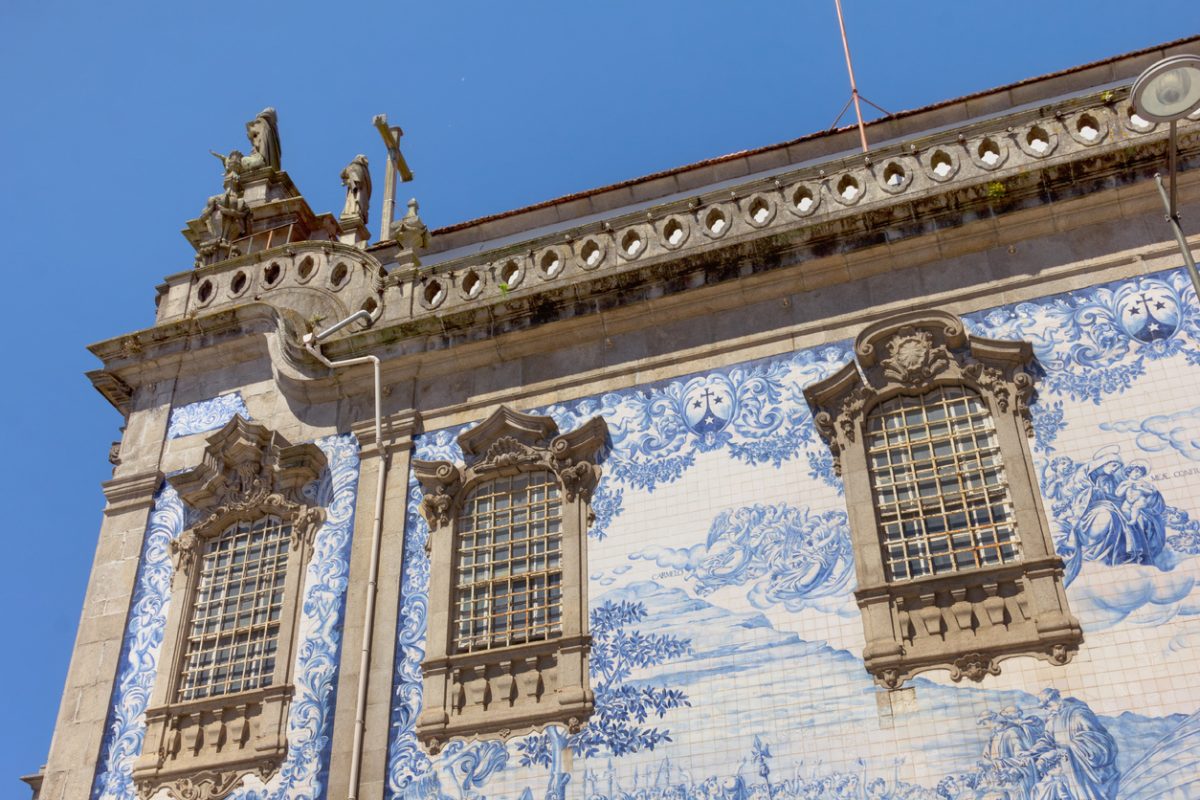On a trip to Lisbon and Porto in January, I was struck by how different the vibe was between the two.
Porto sits some 330 km/ 200 miles to the north of its capital, and its landmarked by steely grey buildings, some lined with azueljos, and the River Douro flowing through.
In the winter months, it’s not quite as warm as Lisbon – which to me, remained colourful and vibrant even in January – Porto was a good 7-8 degrees cooler, with somewhat cloudy weather.
But that’s not to say I didn’t enjoy my January trip to Porto.
The museums were enticing, the port was delicious and – in the breaks of the clouds – the sunsets were mesmerising.
So, here’s exactly what you can expect from a trip to Porto in January.
What’s Porto in January like?

January ushers in quietness to Porto, far removed from the lively summer months.
With the tourist crowd considerably thinner in January, you can savour the city at your own pace, truly soaking in Porto’s distinct culture and lifestyle.
The renowned Livraria Lello bookstore, known for its striking Art Nouveau design and supposed inspiration for Harry Potter, is all but deserted (in the summer, the queues to visit go down the street!).
Exploring celebrated landmarks like the elaborate Church of São Francisco and the sophisticated Palácio da Bolsa is much more relaxed in January!
However, the city is far from inactive.
January sees Porto’s culinary scene at its most vibrant, with warming local dishes that are perfect for countering the winter chill.
Relish a plate of francesinha – a sandwich filled with assorted meats and smothered in a warm, rich tomato and beer sauce. Veggie/ vegan options are available!
Porto’s a bit chillier than Lisbon in January, but the temperatures typically range between 5°C (41°F) and 14°C (57°F), with intermittent rain showers.
In January, the nearby Douro Valley, celebrated for its terraced vineyards and premium wines, is gloriously tranquil; it’s the perfect winter day trip from Porto.
Reasons to visit Porto in January
There is an abundance of reasons to go on a city trip to Porto in January. Whether you want to catch the tail end of Christmas, enjoy its indoor attractions or even head to the beach to watch pro surfers carving waves, this northern Portuguese city has plenty to offer.
1. End of Christmas celebrations
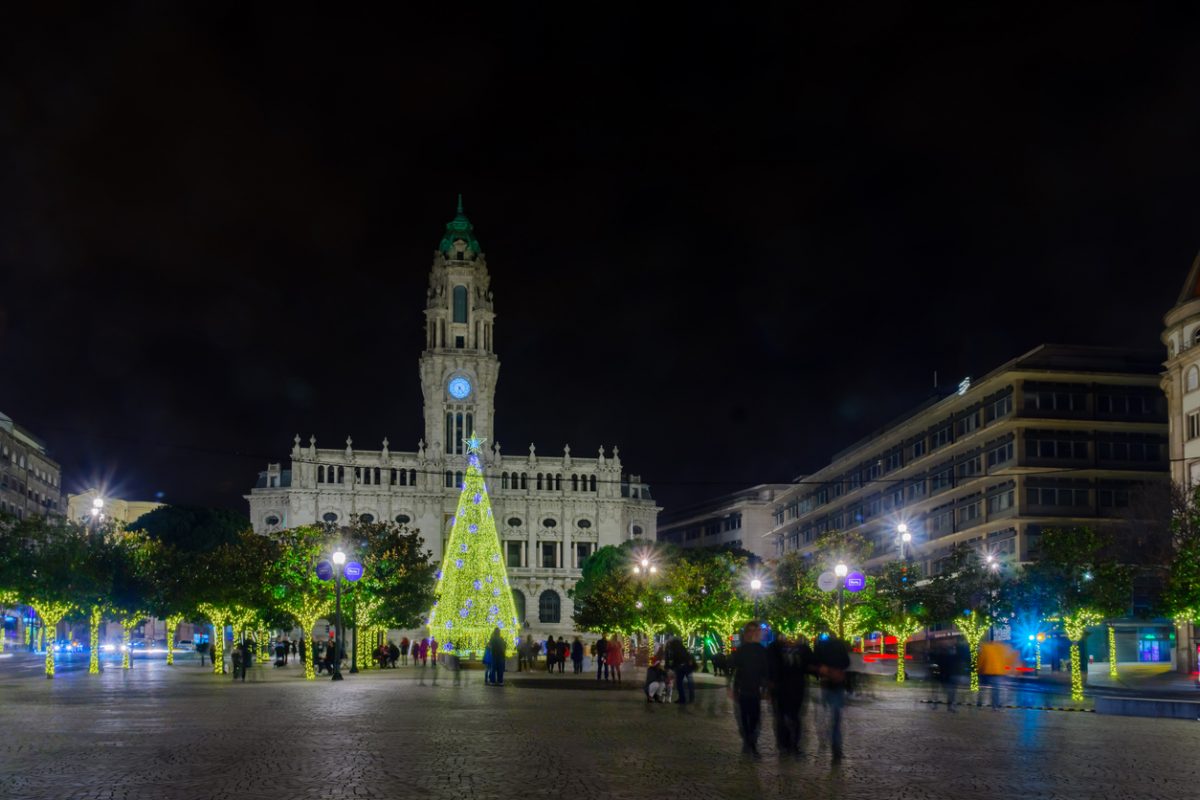
I was too late to experience Porto’s end-of-Christmas celebrations, but you’ll witness them if you visit early in January.
Porto’s Christmas markets continue to thrive until around the 8th of the month and showcase an array of stalls showcasing handicrafts, local products, and festive decorations.
January 6th, known as Dia de Reis or Epiphany, holds a prominent place in Porto’s end-of-Christmas celebrations.
Families come together to enjoy the symbolic Bolo Rei, a delectable cake adorned with candied fruits.
The night before Dia de Reis sees Cantar as Janeiras, where people sing about the three kings bringing Jesus gifts.
2. Sample Port Wine

Porto’s inextricably linked with the production of port wine – and a January trip to the city provides an opportunity to delve into this iconic beverage.
The Port Wine Cellars, situated in Vila Nova de Gaia, across the Douro River from the city centre, are an integral part of Porto’s history and culture.
In January, the cooler weather makes these cellars a haven of warmth and conviviality, a sanctuary where visitors can escape the chilly winter winds!
The cellars are a journey through time.
Guided tours introduce the history of port wine, its unique ageing process, and the families who have shaped this industry over centuries.
Of course, there’s some port tasting too!
3. Fewer Tourists
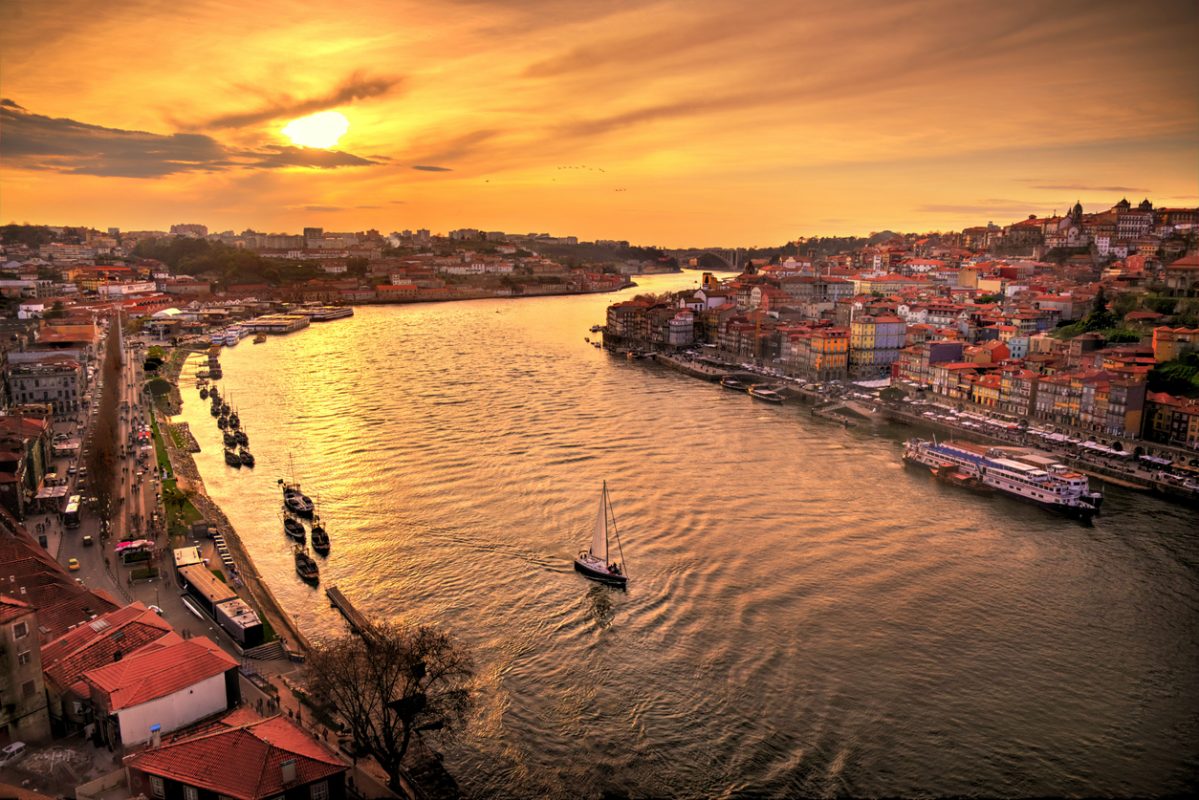
When January arrives in Porto, tourist numbers drop.
Landmarks that typically buzz with activity, such as the Livraria Lello bookstore, celebrated for its Hogwarts-esque architecture, and the Ribeira district, with terraced houses along the Douro River, are more laidback during this time.
Attractions that usually require enduring long lines or advance reservations suddenly become more accessible.
You can savour the unhurried atmosphere while delving into the city’s museums, monuments, and art galleries.
Eating out also becomes a more relaxed affair.
Reserving a table at Porto’s popular eateries, such as DOP or Cantinho do Avillez, is less of a challenge – so you don’t need to plan your restaurant preferences weeks in advance!
Accommodations, too, have more availability; meaning that you’ll likely have more choice when booking.
The city’s viewpoints, such as the Miradouro da Vitória, remain open but are not swamped with tourists vying for the perfect shot.
It’s the ideal time to take in Porto’s magnificent cityscape at a pace that suits you!
4. São Sebastião Festival
One of Portugal’s best festivals is the São Sebastião Festival, held annually on the 20th of January in the nearby town of Santa Maria da Feira.
The festival commemorates São Sebastião, the town’s revered patron saint.
Locals honour him with religious ceremonies and processions.
It’s a vibrant showcase of regional customs and an authentic insight into the area’s deep-rooted religious heritage.
Sitting about half an hour from Porto, this is an easy festival to visit and it’s a wonderful local experience that you won’t forget!
5. Shopping Sales
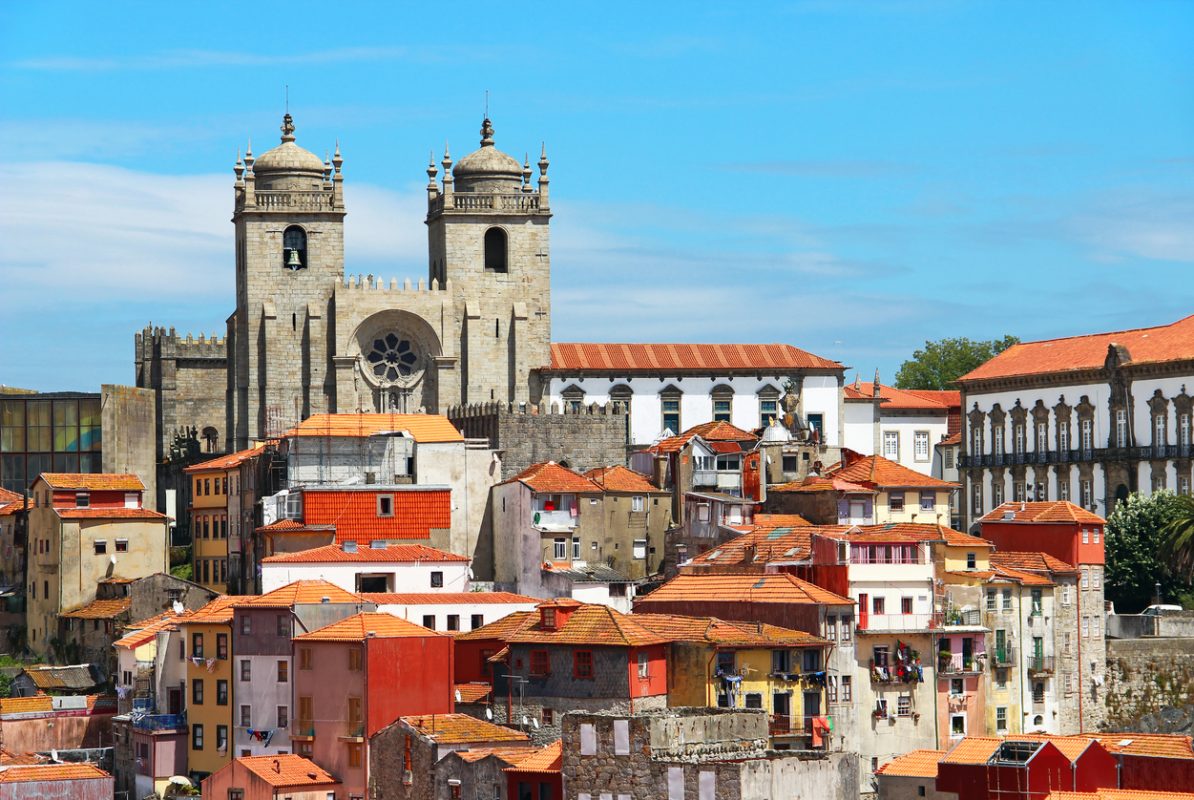
The aftermath of the festive season in Porto is a shopping enthusiast’s dream.
Porto’s plethora of independent boutiques, high street stores, and sprawling shopping centres, such as NorteShopping and ViaCatarina Shopping, drastically cut their prices during this month.
The reductions encompass everything from fashion and accessories to homewares and local artisanal products.
Walking down the renowned shopping streets like Rua de Santa Catarina, you’ll see shop windows displaying enticing discount signs.
This is the perfect time to pick up a unique piece of Portuguese tile art or cork products, or even a designer item for a fraction of its original price.
The city’s vintage and antique stores, like Patch Porto, also join in the January sales, making it an opportune time to hunt for one-of-a-kind treasures.
Keep in mind, Porto is known for its diverse and vibrant shopping scene, not just in the centre but also in neighbourhoods like Foz and Cedofeita.
You may find that boutique stores in these areas have more unique items on sale.
Though, with the significant price reductions, shopping in Porto in January could very well turn into an all-day affair, so do wear your comfortable walking shoes!
6. Indoor Activities
The cooler January weather in Porto offers a perfect excuse to delve into the city’s abundant indoor attractions – and there are plenty, so don’t worry if you have the odd rainy day!
Art aficionados will appreciate the expansive collection at the Serralves Museum of Contemporary Art, with works from acclaimed national and international artists.
Equally impressive is the Soares dos Reis National Museum, Portugal’s first public art museum. Housed in the grand Carrancas Palace, the museum showcases an extensive collection of Portuguese art from the 16th to the 20th centuries, including remarkable sculptures by its namesake, António Soares dos Reis.
For history buffs, the Palácio da Bolsa, a 19th-century neoclassical palace brimming with richly decorated rooms, offers a glimpse into Porto’s past commercial prestige.
Similarly, the Church of São Francisco’s gilded Baroque interiors are a can’t be missed.
Meanwhile, literary enthusiasts can explore the ornate shelves of Livraria Lello, one of the world’s oldest bookstores, without the typical summer crowds.
For those seeking a taste of Porto’s local culture, the Mercado do Bolhão offers an authentic market experience, teeming with fresh produce and local delicacies – you can’t visit Portugal without eating at least five pasteis de natas, after all!
7. Visit the Duoro Valley in the off-season
January is when the Duoro Valley’s famed vineyards undergo the pruning process – a crucial step in preparing for the upcoming growing season.
Away from the typical summer buzz, in January you can learn about the valley’s winemaking traditions with no rush.
You’ll have the opportunity to explore the quintas (wine estates) that dot the terraced hills, many of which continue to offer tours and tastings during this off-peak period.
Among these, Quinta do Seixo stands out with its modern wine centre, providing educational tours that delve into the intricacies of port wine production.
Quinta do Crasto and Quinta do Vallado, both boasting a history spanning hundreds of years, offer a blend of tradition and innovation.
Don’t pass up the chance to savour the region’s famous port and Douro wines, paired with a selection of local cheese and charcuterie for an authentic Portuguese gastronomic experience.
8. Winter Surf Season
Porto may be calm in January, but the Atlantic Ocean tells a different story.
During this month, the coastline near Porto, particularly Matosinhos Beach, witnesses a surge of winter swells, making it a playground for seasoned surfers.
The energy in the air is palpable as surfers from around the world gather to take on the robust waves.
From the shore, you can see them manoeuvring their boards with precision and aplomb, dancing with the Atlantic’s mighty winter currents.
I only recommend surfing in Porto in January if you have a lot of experience.
But even if you’re not planning on grabbing a board, the sheer size of the waves makes the beaches worth visiting.
Nazaré, which is two hours down the coast (much closer to Lisbon) is famous for having some of the world’s biggest waves, and while they’re a little bit smaller on the beaches around Porto, they’re still a sight to behold.
9. Impromptu Day Trips
It’s not just Porto that’s quieter in January.
The rest of Northern Portugal is barely visited by tourists too, which means availability on buses and trains and even the chance to book tours last-minute.
Guimarães is one of the best Porto day trip destinations.
Known as the birthplace of Portugal, this city’s renowned for its medieval architecture and enchanting city square.
Santa Maria Street, lined with well-preserved buildings from the 17th and 18th centuries, is a feast for the eyes, and the impressive Guimarães Castle transports you back to Portugal’s early days.
Braga, another historic city, is home to the oldest cathedral in Portugal, Sé de Braga.
The city’s religious heritage is palpable, with majestic churches and sanctuaries, such as the Bom Jesus do Monte, an iconic pilgrimage site with a grand Baroque stairway.
Then there’s Aveiro, often referred to as the ‘Venice of Portugal’ due to its charming canals, colourful moliceiro boats, and art nouveau buildings. Sampling ovos moles, a sweet local delicacy, is a must when in Aveiro.
10. Mild Winter Climate
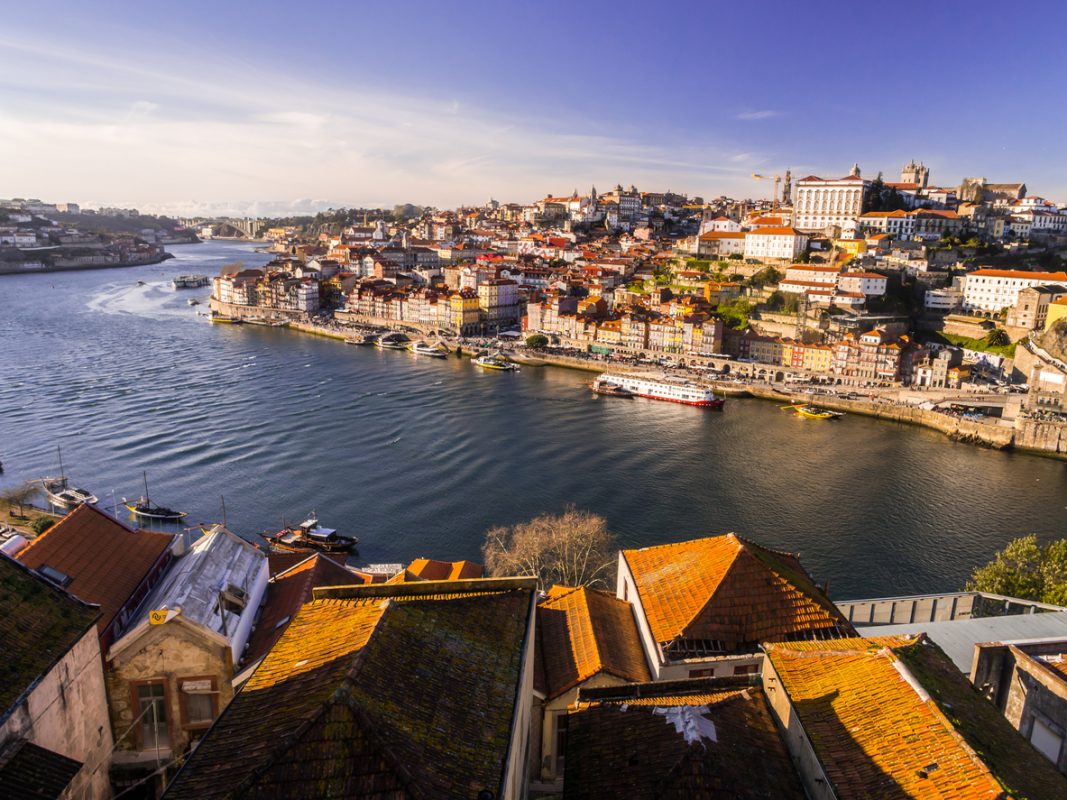
Northern Europe’s icy grasp doesn’t quite extend as far as Porto, whose January climate is comparatively more forgiving.
Daytime temperatures typically range between 8°C (46°F) to 14°C (57°F). It’s cooler than Lisbon – on my winter trip, I noticed a stark difference – but it’s still warmer than say, London in January!
Whilst ‘winter sun‘ isn’t guaranteed, the mild temperatures make it comfortable enough to roam the city’s winding alleyways or stroll along the Douro River’s banks.
On sunnier days, you could even dine al fresco!
Considerations for visiting Porto in January

While January’s an excellent time to visit Porto, there are a few things to consider:
- Weather: January’s one of the coldest and wettest months in Porto. Be prepared for rain and have a plan for indoor activities.
- Limited Daylight: With shorter daylight hours, plan your activities to make the most of the available sunlight.
- Off-Season Closures: Some smaller attractions, shops, or restaurants may have reduced hours or may close for a winter break. It’s always a good idea to check their operating hours in advance.
- Holiday Impact: Post-Christmas and New Year, some establishments might be slower to return to their regular schedules.
- Waterproofs: The weather can be unpredictable. Packing layers and waterproof shoes can help prepare for sudden weather changes.
What’s the Weather Like in Porto in January?
As the new year dawns in Porto, the city is enshrouded in the mild chill of winter.
Temperatures oscillate between mild to slightly chilly, making it ideal to see the city – as long as you have enough layers.
The winter sun peeks through the clouds occasionally!
Here’s a closer look at Porto’s weather specifics in January:
| Average high temperature | 14°C (57°F) |
| Average low temperature | 5°C (41°F) |
| Days of rain | 14 |
| Sea temperature | 14°C (57°F) |
What to pack for Porto in January
With January being one of Porto’s cooler months, pack with warmth in mind.
The city’s climate during this time of year lends itself to layered clothing.
Pack lightweight thermals, sweaters, and a warm, waterproof outer layer.
These layers can help adjust to temperature changes throughout the day.
As January can be quite rainy in Porto, pack a compact and reliable umbrella and waterproof shoes.
A good pair of sturdy, comfortable shoes is a must-have when exploring the hills!
For evenings out, Porto’s restaurants and cultural events often call for slightly smarter attire.
Things to do in Porto in January
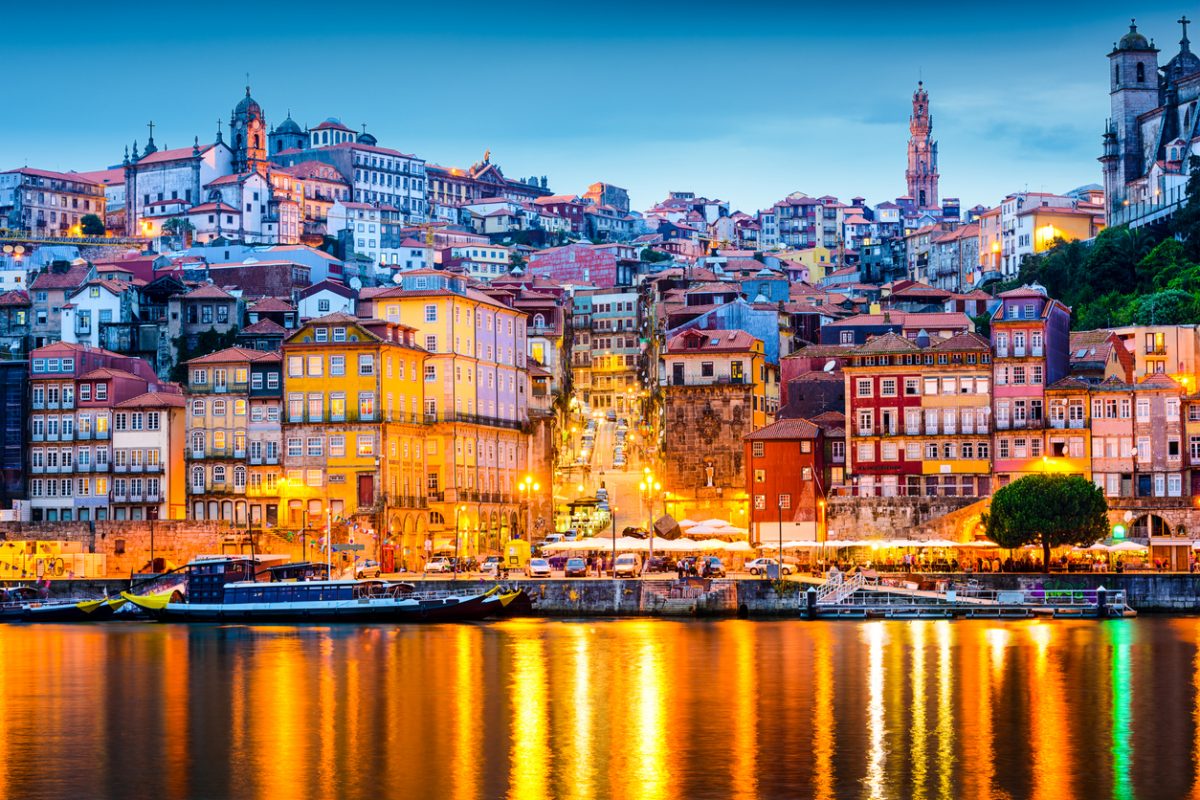
Here are the top things to do in Porto in January:
- Step into the grand Livraria Lello, the bookstore that enchants with its intricate Art Nouveau interior.
- Traverse the cobbled streets of the Ribeira district.
- Take a soothing stroll along the banks of the Douro River.
- Visit the atmospheric Port Wine Cellars in Vila Nova de Gaia.
- Enjoy a quiet moment at the Church of São Francisco.
- Wander through the Serralves Museum.
- Explore the treasures of Soares dos Reis National Museum, which displays a rich collection of Portuguese art spanning from the 16th to the 20th century.
- Venture into the nearby Douro Valley, and experience the charm of vineyard pruning season.
- Take an impromptu day trip to Guimarães, Braga, or Aveiro.
- Wrap yourself up warmly and watch the surfers tackle the powerful winter waves at Matosinhos Beach.
- Indulge in retail therapy, and take advantage of post-holiday discounts in Porto’s shops and boutiques.
- Visit the São Sebastião Festival in nearby Santa Maria da Feira on January 20th.
- End your day with a delicious meal at one of Porto’s popular eateries.
- Cap off a day of exploration at the Miradouro da Vitória, a city viewpoint that offers stunning vistas of Porto.
- Be sure to stroll around Palácio da Bolsa, the grand 19th-century neoclassical building.
You can see all the best things to do in Porto in winter by clicking here.
Is Porto worth visiting in January?
With an abundance of attractions, great food and plenty of wine, Porto’s definitely worth visiting in January. It’s an inexpensive, less-crowded time to visit, but there’s plenty going on!

